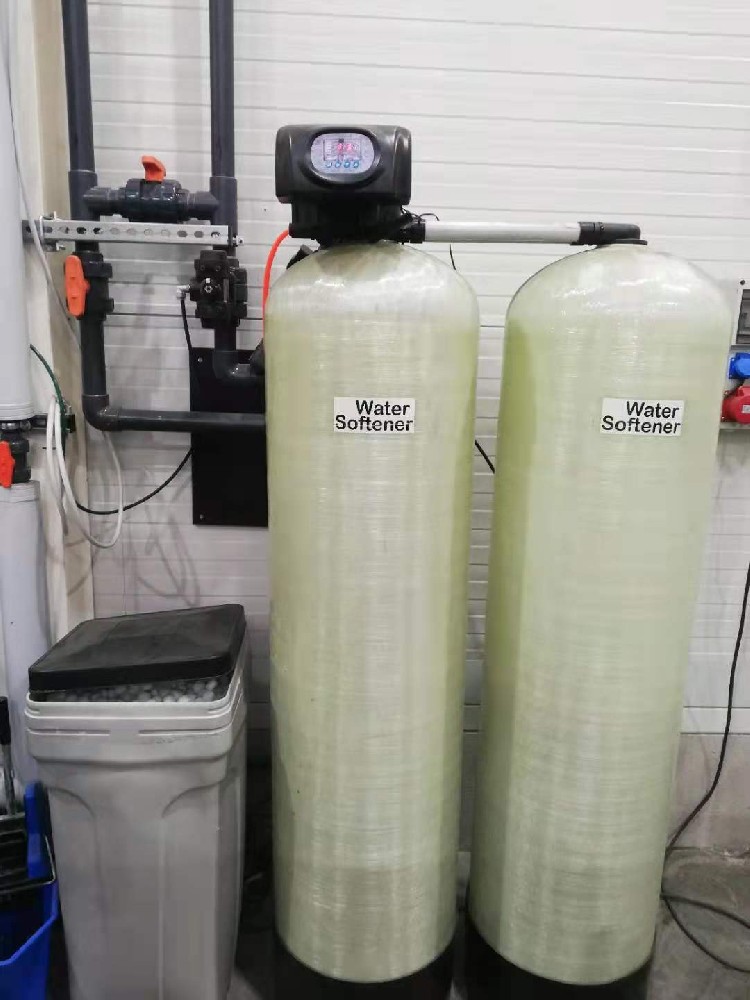
Wechat/Whatsapp:
+8613798883773

Wechat/Whatsapp:
+8613798883773
HYWATER Water softener


Instructions about Water softener operation Water softener principle The hardness of water is mainly composed of cations ions, like calcium (Ca2+), magnesium (Mg2+) ions. When the raw water containing hardness ions passes through the resin layer of the water softener, the calcium and magnesium ions in the water are replaced with the sodium ions in the resin, the resin adsorbs the calcium and magnesium ions and the sodium ions enter the water, so the water flowing out of the water softener is demineralized water. Water softener structure 1) Control valve: The valve body is made of high-strength, light-weight, corrosion-resistant engineering plastics and lead-free brass. 2) Anti-corrosion tank body: The tank body is made of glass fiber reinforced plastic (carbon steel or stainless steel lined plastic tank body can be selected), the tank body is anti-corrosion, pressure-resistant and has a long service life. 3) Uniform water distribution system: The jet type water distribution is adopted, the effective exchange capacity of resin can be fully exerted, and the salt control is precise, and no salt pump is required. 4) Imported high-performance resin: strong acid cation exchange resin is selected, with low breakage rate, uniform particle size, and improved ion exchange rate. Water softener features 1) High efficiency: The overall design of the softening water device is reasonable, so that the effective working exchange capacity of the resin can be fully utilized. 2) Labor saving: high degree of automation, no need to set up special personnel on duty. 3) Water saving: The water production rate of the softened water device is over 98%. 4) Power saving: The principle of siphon regeneration is adopted, no salt pump is needed, and the power consumption is only 1% of that of manual water softening equipment. 5) Small footprint: only the footprint of the resin tank and the salt tank is required to save the space occupied by the pipeline and the salt pump. 6) Easy to adjust: Users can adjust the regeneration cycle and regeneration time according to actual needs. Water softener operation 1) Backwash: After resin failure, backwash with water from bottom to top is performed before regeneration. There are two purposes of backwash. One is to loosen the compressed resin layer during operation through backwash, which is conducive to the full contact between resin particles and regeneration liquid; discharge, so that the water flow resistance of the water softener will not increase. 2) Regenerating brine absorption: Regeneration is performed once every 24 hours, and the regeneration time is 2 hours each time. The regeneration salt solution flows through the failed resin layer at a certain concentration and flow rate to restore the original exchange capacity. 3) Backwash: After the regeneration liquid is fed, there is still salt liquid in the water softener that has not participated in the regeneration exchange. Use clean water less than or equal to the regeneration liquid flow rate for cleaning (slow cleaning), so as to make full use of the regeneration effect of the salt liquid and reduce the normal washing. load. 4) Flush: The purpose is to remove the residual regeneration waste liquid in the resin layer, usually at a normal flow rate until the water is qualified. 5) Brine tank filling: Fill the brine tank water with the amount of salt required to regenerate the solution once. Water softener salt consumption for regeneration calculation Generally speaking, it can be calculated in this way, the amount of resin (L)*160=the amount of salt (g), the concentration of the soft water salt NaCl regeneration solution is 5-12%; if the amount of resin is 10L, generally each regeneration is 10*160=1600g or 1.6 The kilogram needs to be based on the requirements of the hardness of the influent water and the quality of the effluent. Water softener resin replacement cycle The resin replacement time generally ranges from several months to one year, mainly related to the raw water quality (raw water hardness), resin quality, water consumption (equipment usage) and other factors. Whether the resin needs to be replaced mainly depends on the strength, exchange capacity and regeneration capacity of the resin. For example, if the resin strength is broken by more than 40%, it must be replaced; if the resin exchange capacity drops by 30%, it must be replaced. More inquiries related to Water softener please contact: Mob& Wechat& WhatsApp: (+86)13544774483 Email: sales010@water-sy.com We will provide high-quality, all-round comprehensive professional services for project consulting, system design, manufacturing, installation and commissioning, personnel training, etc
